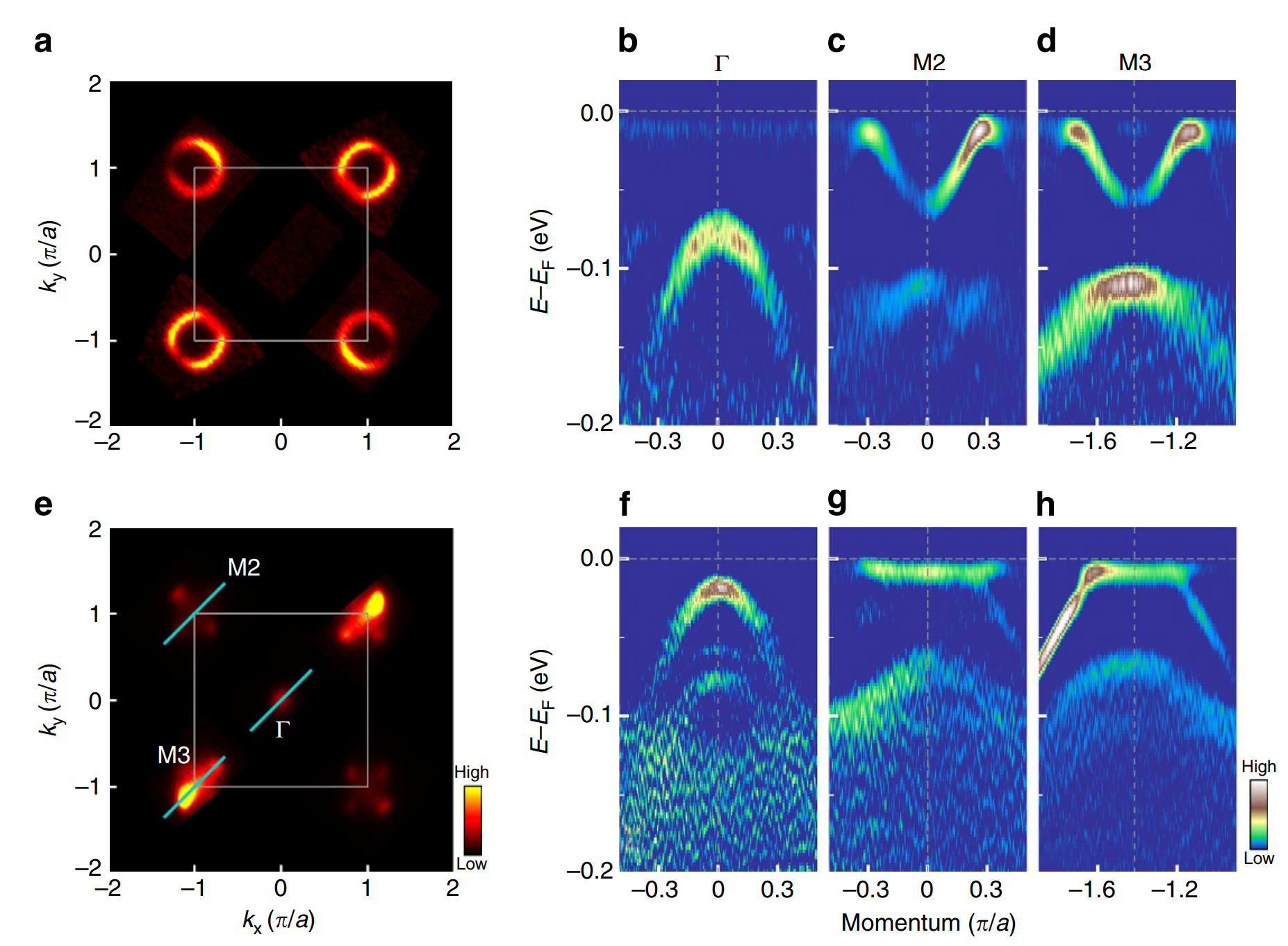
In high-temperature cuprate superconductors, it is now generally agreed that superconductivity is realized by doping an antiferromagnetic Mott (charge transfer) insulator. The doping-induced insulator-to-superconductor transition has been widely observed in cuprates, which provides important information for understanding the superconductivity mechanism. In the iron-based superconductors, however, the parent compound is mostly antiferromagnetic bad metal, raising a debate on whether an appropriate starting point should go with an itinerant picture or a localized picture. No evidence of doping-induced insulator–superconductor transition (or crossover) has been reported in the iron-based compounds so far.
We observed an electronic evidence of an insulator–superconductor crossover observed in the single-layer FeSe film grown on a SrTiO3 substrate. By taking angle-resolved photoemission measurements on the electronic structure and energy gap, we have identified a clear evolution of an insulator to a superconductor with increasing carrier concentration. In particular, the insulator–superconductor crossover in FeSe/SrTiO3 film exhibits similar behaviors to that observed in the cuprate superconductors. Our results suggest that the observed insulator–superconductor crossover may be associated with the twodimensionality that enhances electron localization or correlation. The reduced dimensionality and the interfacial effect provide a new pathway in searching for new phenomena and novel superconductors with a high transition temperature.
- Junfeng He#, Xu Liu#, Wenhao Zhang#, Lin Zhao# et al., Proc. Natl. Acad. Sci. USA 111 (52), 18501-18506 (2014)
 High-temperature superconductivity in the single-layer FeSe/SrTiO3 film has generated much attention. Initial work found that, while the single-layer film exhibits a clear signature of superconductivity, the double-layer film shows an insulating behaviour. Such a marked layer-dependent difference is surprising and the underlying origin remains unclear.
High-temperature superconductivity in the single-layer FeSe/SrTiO3 film has generated much attention. Initial work found that, while the single-layer film exhibits a clear signature of superconductivity, the double-layer film shows an insulating behaviour. Such a marked layer-dependent difference is surprising and the underlying origin remains unclear.
We performed a comparative study between the single-layer and double-layer FeSe/SrTiO3 films via ARPES. We find that, different from the single-layer film, the double-layer film is hard to get doped and remains in the semiconducting/ insulating state under an extensive annealing condition. Such a behaviour originates from the much reduced doping efficiency in the bottom FeSe layer of the double-layer FeSe/SrTiO3 film from the FeSe–SrTiO3 interface. These observations provide key insights in understanding the doping mechanism and the origin of superconductivity in the FeSe/SrTiO3 films.
Xu Liu#, Defa Liu#, Wenhao Zhang#, Junfeng He# et al., Nature Communications 5, 5047 (2014)
We have carried out the first ARPES measurement on the single-layer FeSe/STO film. A distinct but simple electronic structure is established, which serves as a clear case to understand the superconductivity in iron based superconductors. Our subsequent systematic studies have revealed the phased diagram as well as the high Tc (65K) in this system. By examining the detailed carrier evolution in the films, we have observed the first example of a carrier density-induced insulator-superconductor crossover, which is related to the reduced dimensionality and enhanced interfacial effect. In order to gain more insights on the enhanced superconductivity, we have also performed a comparative study and unveiled the dichotomy between single-layer and double-layer FeSe/STO films. These systematic studies have not only provided spectroscopic evidence for understanding the superconducting mechanism in iron based superconductors, but also established a new platform to manipulate superconductivity via reduced dimensionality and interfacial effect.
Shaolong He#, Junfeng He#, Wenhao Zhang#, Lin Zhao# et al., Nature Materials 12, 605–610 (2013)
The discovery of high-temperature superconductivity in iron-based compounds has attracted much attention . How to further increase the superconducting transition temperature (Tc) and how to understand the superconductivity mechanism are two prominent issues facing the current study of iron-based superconductors.
We investigated the electronic structure and superconducting gap of the single-layer FeSe superconductor thoroughly. Its Fermi surface is distinct from other iron-based superconductors, consisting only of electron-like pockets near the zone corner. The temperature dependence of the isotropic superconducting gap gives a Tc ~ 55 K. These results have established a clear case that such a simple electronic structure is compatible with high- Tc superconductivity in iron-based superconductors.
Defa Liu#, Wenhao Zhang#, Daixiang Mou#, Junfeng He# et al., Nature Communications 3, 931 (2012)
